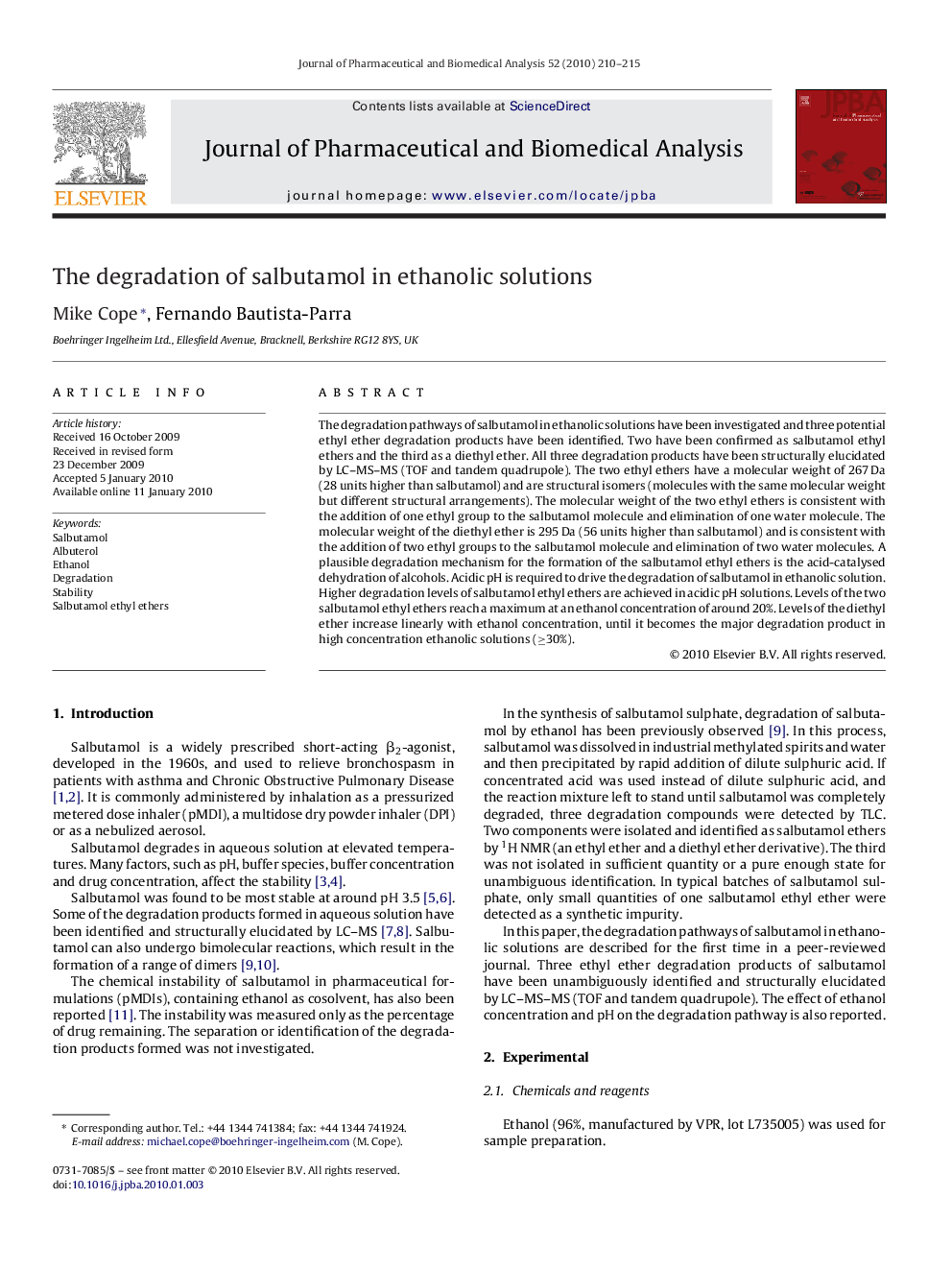| Article ID | Journal | Published Year | Pages | File Type |
|---|---|---|---|---|
| 1221916 | Journal of Pharmaceutical and Biomedical Analysis | 2010 | 6 Pages |
The degradation pathways of salbutamol in ethanolic solutions have been investigated and three potential ethyl ether degradation products have been identified. Two have been confirmed as salbutamol ethyl ethers and the third as a diethyl ether. All three degradation products have been structurally elucidated by LC–MS–MS (TOF and tandem quadrupole). The two ethyl ethers have a molecular weight of 267 Da (28 units higher than salbutamol) and are structural isomers (molecules with the same molecular weight but different structural arrangements). The molecular weight of the two ethyl ethers is consistent with the addition of one ethyl group to the salbutamol molecule and elimination of one water molecule. The molecular weight of the diethyl ether is 295 Da (56 units higher than salbutamol) and is consistent with the addition of two ethyl groups to the salbutamol molecule and elimination of two water molecules. A plausible degradation mechanism for the formation of the salbutamol ethyl ethers is the acid-catalysed dehydration of alcohols. Acidic pH is required to drive the degradation of salbutamol in ethanolic solution. Higher degradation levels of salbutamol ethyl ethers are achieved in acidic pH solutions. Levels of the two salbutamol ethyl ethers reach a maximum at an ethanol concentration of around 20%. Levels of the diethyl ether increase linearly with ethanol concentration, until it becomes the major degradation product in high concentration ethanolic solutions (≥30%).
